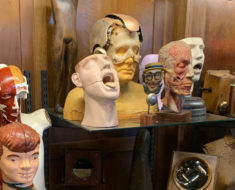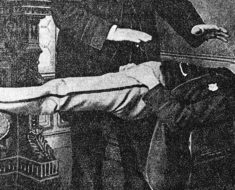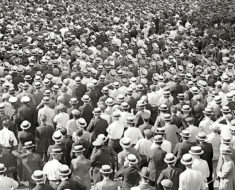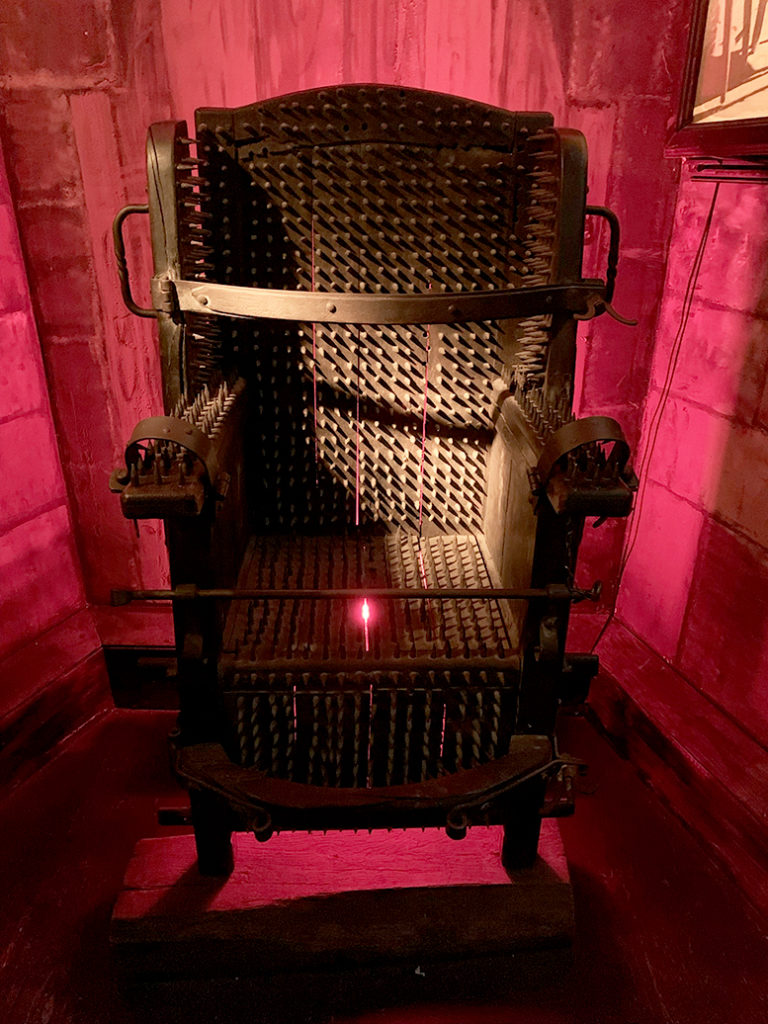
The Iron Chair, as seen in the Amsterdam Museum of Torture. Photo by Marc Hartzman.
Everyone wanted the Iron Throne, but in the Middle Ages, no one wanted the Iron Chair.
The terrifying torture device featured hundreds of sharp spikes on the seat, back, arms and legs of the chair. This description from an 1891 newspaper describes how it used to punish criminals:
“The victim was seated and sustained by the front bar of the chair, then by another vertical bar, while two rings fastened the ankles below ; in the upper portion there was a collar foe the neck, and then another transverse bar passing through the first, and fitted at each extremity with a ring holding the wrists. Underneath the seat was a stove.”
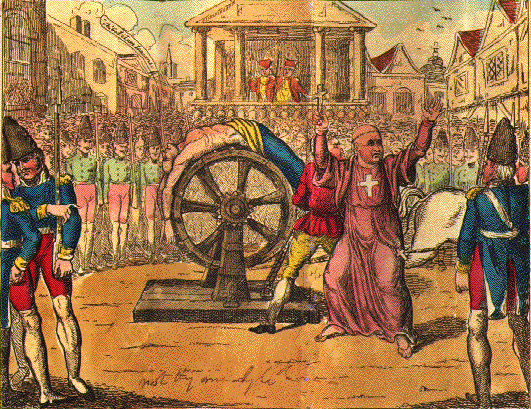
Jean Calas tortured on the wheel in 1762.
So if the pressure applied against the sharp spikes didn’t cause enough anguish, the fire burning beneath the victim offered plenty of bonus pain.
One known victim of the iron chair was Jean Calas of Toulouse, France, in 1762. Calas had been tried for the murder of his son, but maintained his innocence throughout the trial and after his sentencing. The death was a suicide, he claimed. Aside from the chair, Calas was also tortured on the wheel, and by having his legs and arms stretched until they were yanked from their sockets. It’s unclear if this was before or after the Iron Chair.
As a Protestant in a Catholic land, he didn’t have many sympathizers. But he did have a few, and two years later he was exonerated.
To find out more about other tough times to be alive in France, read The Unfortunate Career of Charles-Henri Sanson: Executioner of France.

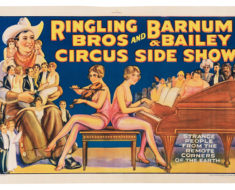
![Artificial nose, 17th-18th century, made of plated metal. Such noses would have been made to replace an original, which may have been congenitally absent or deformed, lost through accident or during combat or due to a degenerative disease, such as syphilis. By Science Museum London / Science and Society Picture Library [CC BY-SA 2.0 (https://creativecommons.org/licenses/by-sa/2.0)], via Wikimedia Commons](https://www.weirdhistorian.com/wp-content/uploads/2017/12/Artificial_nose_17th-18th_century_By-Science-Museum-London-Science-and-Society-Picture-Library-CC-BY-SA-2.0-via-Wikimedia-Commons-235x190.jpg)
